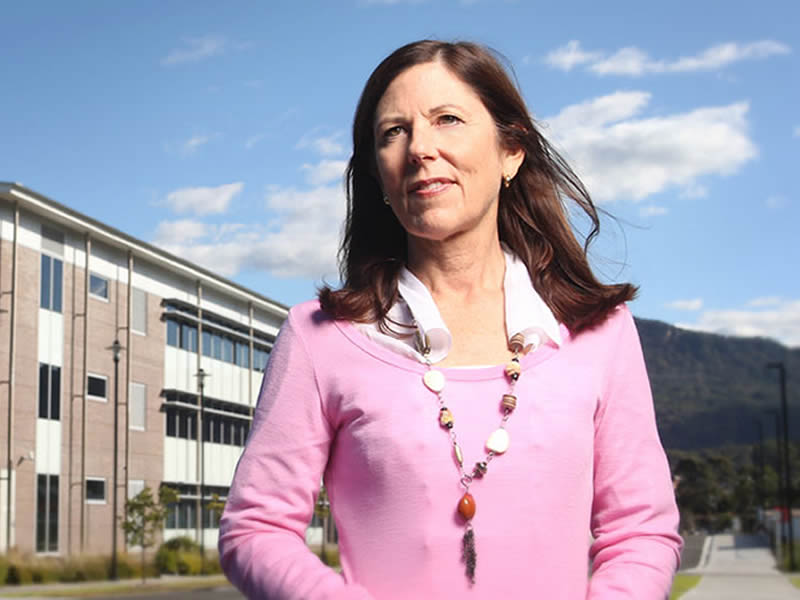Innovation may be the love-child of technology and creativity, but the focus is often fixed firmly on code and computers, leaving genuine creativity to fend for itself. This is not how the CSIRO’s Elizabeth Eastland rolls.
Appointed as general manager of strategy, market vision and innovation at the CSIRO at the end of May, Dr Eastland’s role is to investigate the organisation’s strengths, the natural biases of Australia, its global opportunity and to then; “Synthesise (that) into a clear narrative that helps define where do we invest? Where do we divest?”
CSIRO describes her role “To guide our strategic direction” and lead the ON Accelerator program. She nevertheless reports to deputy chief executive Craig Roy, rather than direct to CSIRO chief executive Larry Marshall.
Reporting lines aside, Dr Eastland brings to the role a clear-eyed understanding of the chance nature of scientific research, the need to support raw creativity, and tolerance for failure.

The daughter of a NASA scientist father and artist/architect mother, her undergraduate years started with a foray into physics and fine art before she pivoted to graduate in creative writing and computer science. She balanced an MBA with a Master of Fine Arts, while her PhD bridged both disciplines through a thesis and film installation which explored the process of scientific discovery.
She’s also managed a stellar career in technology-related roles, punctured by nearly four years sailing the world.
But it was her PhD which revealed; “Just how much accident and chance pay a role, particularly in breakthrough science.
“Two of the women scientists were engaged in processes to publish and explore – one commercialising a very major breakthrough – and both of them were accidental. The other two – one a very senior scientist who has spent her whole life working in gravitational physics – were struggling for that breakthrough.”
The challenge, she said, is that there is still no encouragement in the scientific world to “publish what isn’t a success.”
And even in the technology sphere the word failure is only now being rehabilitated. “What I would hate to see is one or two failures and the market go ‘oh that innovation experiment didn’t work, go back to resources’.
“Because that’s the opportunity to say maybe that didn’t work, what did we learn from it and how do we take it forward? That would be growing up wouldn’t it if we stopped and said let’s take a different turn.”
Whatever steps technologists and entrepreneurs are taking toward embracing failure, Dr Eastland said that in the realm of science it is still shunned.
“I was sitting with one of the scientists, and she said that there should be a database of all the failures. We can learn such a lot from that. It would encourage people not to go down those paths or encourage other people to see something of value in those publications.
“Maybe that is the lesson scientists and artists can bring to the innovation table – to not label things as disgraceful – but rather a moment to say ‘what did we learn?’
“Technology puts so much pressure on us not to stop and think – it is hard. But the opposite is continuing on slippery slide, on a very quick path.”
Dr Eastland said that the art installation that arose from her PhD, which was shown at the Powerhouse Museum during Sydney’s recent Vivid festival, also revealed; “How different the process of scientific discovery is compared to populist documentaries and publications.
“The most important thing is how scientists, when they publish their work, publish in retrospect and cast a narrative to suit a particular publication that assumes there is a logical progression.”
Dr Eastland was formerly director of innovation and commercial research at the University of Wollongong, and founder of the University’s iAccelerate programme. She was also artist-in-residence at the Intelligent Polymer Research Institute at the University of Wollongong run by Professor Gordon Wallace.
It was during that period that she realised; “How normally the lab is chaotic, colours are everywhere, solutions are everywhere, people are not, or are wearing lab coats.
“As soon as a public visitor comes … everyone lines up at their desk. A simple observation like that showed me that the presentation of science is one of orderliness and predictability.” Scientific discovery in contrast is; “quite chaotic and accidental”
“That caused me to ask things – how do you make breakthroughs? how do you know what to do when you don’t know what to do next?”
It’s precisely the question with which Dr Eastland and the CSIRO grapple – and a question especially acute given constricting budgets and mounting government expectations.
She is currently exploring the advantages that Australia and the CSIRO have naturally, and how that could direct the organisation’s agenda- but with a clear focus on global opportunities. To succeed, Australia must leverage its local advantages internationally, she said.
“What are those areas where we have comparable advantage on a global stage? My hypothesis is they have to do with certain parts of being an Australian. What is it about our peculiarity, our large size, our arid land, our distance between each other? We are a highly educated but densely clustered population.
“Probably it’s no surprise that WiFi came out of our radio astronomy group that came out of distance issues – that kind of makes sense. GoogleMaps came out of a big land. The biotech group knows that we are a highly educated but small market, so need to make highly customised high value things.”
In the back of her mind though she will still hear the voices of the four women scientists she studied for her PhD. “All of them said great science was about being open, fundamentally being open and curious and aware and not going for the obvious route – staying open to what Mother Nature tells you.”
Do you know more? Contact James Riley via Email.

